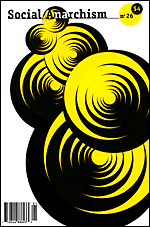The Way the Wind Blew
Ron Jacobs' The Way the Wind Blew: A History of the Weather Underground is a sympathetically written, concise history of the militant Weather Underground organization. Jacobs explains how Weather grew out of a split within the Students for a Democratic Society (SDS), primarily between those who supported the Black Panthers as a vanguard of the revolution, and the Progressive Labor Party (PL) whose members thought black nationalism was an ideological and tactical mistake. As SDS fell apart and the PL walked off into Maoist obscurity, the Weather Underground embarked on a revolutionary campaign to "bring the war home." The organization attempted to end U.S. imperialism, especially its current war in Vietnam. It defined itself as a domestic revolutionary organization in league with the national liberation movements of Asia, Africa, and Latin America.
Jacobs begins his history of the Weather organization in 1968, introducing a myriad of New Left organizations and players in the movement. At that time, the U.S. antiwar movement shifted into a new more militant phase, with the New Left itself reaching its highest level of adherents. Jacobs categorizes the New Left as moving into "a more coherent stance toward the liberal-conservative establishment" and toward an articulation of a sociopolitical critique of American society that focused on the inherent injustice of the society and its explicit imperialism. Though Jacobs falls short of articulating, for the sake of context, a fully developed definition of the New Left and its ultimate goals, he is quite good at explaining changes in the antiwar movement. According to him, SDS, with its student/campus base, generated an antiracist and anti-imperialist stand that significantly broadened the antiwar movement to an attack on American society as a whole.
The actual creation of the Weather organization emerged out of the essential disintegration of SDS. Jacobs does his best to decipher the sometimes thickheaded ideological differences that led to the breakup. He focuses on the issue of racism and revolution as the key to the origins of the Weathermen. With the 1968 SDS convention as a backdrop, Jacobs explains how the drama of yet another sectarian split in the history of the American Left took place. According to him, PL, a significant intellectual strain in SDS, argued that African Americans were simply "superexploited workers" and needed to view themselves within a class context rather than in an exclusively racial context. Members of what was to be the Weather Underground, on the other hand, argued that racism, imperialism, and capitalism were intimately tied together into a system that could only be changed through a revolution led by the truly oppressed, i.e., African Americans. Jacobs notes, with fine insight, that the purist, revolutionary posture that the Weathermen embraced would ultimately lead to their inability to form alliances with other groups who had a different revolutionary agenda or who were radicals rather than revolutionaries. Yet Jacobs' sympathy for the Weathermen does get in the way of his analysis. He puts the blame for the destruction of SDS at the feet of PL when both Weather members and the PL were equally responsible for the failure of socialist unity. At the time, SDS was the most successful movement in the U.S. Left since the Communist party of the 1930s, and it was probably the premier New Left organization of the 1960s.
With the "Days of Rage" period, Jacobs demonstrates how the Weather Underground's ideas evolved as individuals dropped away from the movement and others gained influence and positions of leadership. Yet despite the introduction of individuals, Jacobs does not offer adequate personal profiles. As he states in the book's preface, he deliberately avoided writing a history of Weather personalities and centered instead on the group's political history. Though laudable, his mission short-changes the reader. An explanation of personal motives and decisions could have offered readers a better sense of Weather members as people with a history and granted more insight into their organizational dynamics. Studying only the text that historical figures leave behind is sometimes unavoidable, because that is all that survives. However, with many Weather people still alive, Jacobs could have made better use of oral histories, especially since his endnotes suggest that he had contact with individual former Weather Underground members.
Jacobs does an excellent job of taking the reader into the inner workings of the group, its ideology, strategy, tactics, and evolution. With a series of local collectives loosely supervised by the national leadership, the organization rejected mass alliance antiwar demonstrations, all reforms of U.S. society, accepted the most radical elements of the counterculture, rejected the revolutionary potential of the white working class, and moved to advocate street violence as a revolutionary act. Furthermore, Jacobs continues his characterization of the Weather Underground as an organization driven to create a fighting cohort of committed revolutionaries. He delves into their sexual views, their use of LSD, and into their use of intense self-, individual-, and group-criticism sessions. Jacobs seriously analyzes these attributes of the Weathermen, while other scholars have tended to either ignore or belittle them.
Jacobs also explains the groups' struggle with the state, describing outright repression, infiltration, and legal persecution. But he is at his most insightful as he explains the evolution of the Weathermen as it moved from an above ground organization to an underground one. Militant demonstrations by Weather gave way to bombings. Their move to forms of "propaganda by the deed" tends to be overrated by Jacobs, but he does offer the necessary criticism of the group's ideological bent and strategy through the comments of other revolutionary Leftists. Also Jacobs accurately views Weather within the context of the Women's Liberation Movement and shows how Weather responded to this influence. Moreover, he places Weather well within the context of other movements and organizations of the New Left, e.g. the Black Panther Party and the Symbionese Liberation Army, and their influence on and relationship to Weather. For the reader who lacks an adequate background of the period, some brief historical descriptions of such organizations would have been helpful. Over all, though, the latter chapters of his book (especially chapters six and seven) offer a rare glimpse into a history of the American Left that has not been given the attention it deserves. Yet one element missing from Jacobs' ideological analysis is an analysis of Weather's collective view of a post-revolutionary world. The authoritarian strain that ran through Weather did not bode well for any libertarian socialist future. One wonders what kind of socialism Weather members envisioned.
Unfortunately, Jacobs' book lacks a satisfactory conclusion. He takes the reader to the point when Weather begins to acknowledge the mistakes of its purist ideological stand that alienated it from much of the American Left. The work and struggles of the Prairie Fire Organizing Committee, Weather's attempt to form an above ground support group, are given fair treatment. His analysis of the mid-70s Prairie Fire document and the New Left's reaction to it is well written. But as the book ends with the surrender of Weather men and women, Jacobs concludes his political history on a narrative descriptive note. The analysis that he exhibited throughout much of the book is lacking at its end. A final appraisal by Jacobs on Weather's path to revolution and the price that the revolutionaries had to pay would have been worth reading. He gives some brief personality profiles at the end of the book in the form of an appendix, but these, unfortunately, lack depth. Finally, little information is provided by Jacobs regarding how Weather members evaluated their experiences.
Overall this book is a fine treatment of its subject. Jacobs takes the Weather organization seriously. He gives a much more comprehensive history and analysis of Weather than Tod Gitlin's rather bitter The Sixties (though any student of the American Left should read Gitlin's personal and highly readable work). For those interested in a truly comprehensive history of the domestic side of the Vietnam war and the significance of Weather's anti-imperialist mission, Tom Wells' The War Within would be good reading.
The Way the Wind Blew is a handsome book with many photographs. Jacobs includes several excerpts of Weather communiques and other bits of New Left writings. He also has a useful chronology of events and a helpful bibliography. This study is a solid contribution to an ever growing body of work relating to the 1960s, the Vietnam war, and the history of the American Left.

